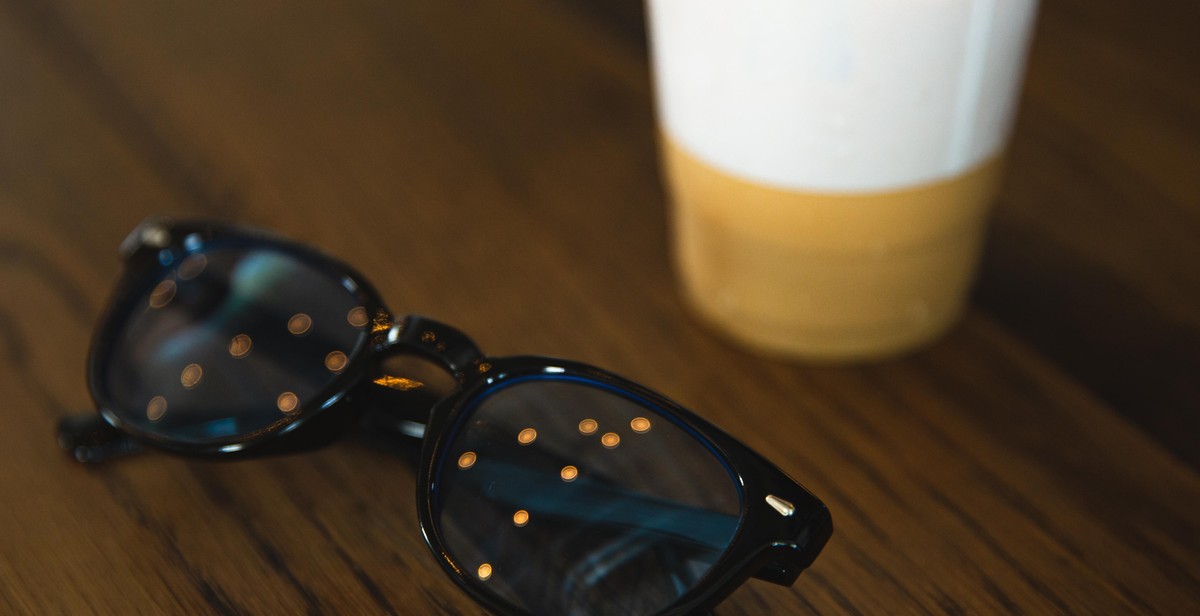How to Choose the Perfect Pair of Sunglasses for Your Face Shape: Flattering Styles for Sun Protection
Sunglasses are an essential accessory for protecting your eyes from harmful UV rays and bright sunlight. But with so many styles and shapes to choose from, finding the perfect pair can be overwhelming. The key to finding the right sunglasses is to choose a pair that complements the shape of your face.
Different Face Shapes
There are several different face shapes, including round, square, oval, heart-shaped, and diamond-shaped. Each shape has its own unique features, and the right pair of sunglasses can enhance those features while also providing sun protection.
Round Face
Round faces have soft features and are roughly the same width and length. To balance out the curves of a round face, look for sunglasses with angular frames, such as square or rectangular shapes.
Square Face
Square faces have strong jawlines and angular features. To soften the face, choose sunglasses with round or oval frames.
Oval Face
Oval faces have balanced proportions and can wear almost any style of sunglasses. Experiment with different shapes and sizes to find the perfect pair.
Heart-Shaped Face
Heart-shaped faces have wider foreheads and narrow chins. Look for sunglasses with bottom-heavy frames, such as aviators or cat-eye styles.
Diamond-Shaped Face
Diamond-shaped faces have narrow foreheads and jawlines with wide cheekbones. Choose sunglasses with oval or rounded frames to balance out the face.
By selecting sunglasses that complement your face shape, you can enhance your features while also protecting your eyes from the sun’s harmful rays. With the right pair of sunglasses, you can make a fashion statement while also taking care of your eyes.

Understanding Your Face Shape
Before you start shopping for sunglasses, it is important to understand your face shape. Knowing your face shape will help you choose the most flattering styles that will complement your features and enhance your overall look.
There are five main face shapes: oval, round, square, heart, and diamond. To determine your face shape, stand in front of a mirror and pull your hair back. Trace the outline of your face with a washable marker or lipstick. Then step back and look at the shape you have drawn.
Oval Face Shape
An oval face shape is considered the most versatile and balanced. If you have an oval face, you can wear almost any style of sunglasses. Look for frames that are wider than the broadest part of your face and avoid frames that are too large or too small.
Round Face Shape
A round face shape has softer, curved lines with a width and length that are roughly the same. To balance the roundness of your face, look for sunglasses with angular frames that are wider than your cheekbones. Avoid round or curved frames that will make your face look even rounder.
Square Face Shape
A square face shape has a strong jawline and a broad forehead. To soften the angles of your face, look for sunglasses with round or oval frames. Avoid angular frames that will accentuate your strong features.
Heart Face Shape
A heart face shape has a broad forehead and cheekbones that narrow down to a small chin. To balance the proportions of your face, look for sunglasses with wider frames that are wider at the bottom. Avoid frames that are wider at the top or have embellishments on the upper corners.
Diamond Face Shape
A diamond face shape has high cheekbones and a narrow forehead and chin. To highlight your cheekbones and balance your features, look for sunglasses with oval or cat-eye frames. Avoid frames that are wider than your cheekbones or have sharp angles.
By understanding your face shape and choosing sunglasses that complement your features, you can create a stylish and flattering look while protecting your eyes from the sun.

Choosing the Right Frame
When it comes to choosing the perfect pair of sunglasses for your face shape, the frame is just as important as the lenses. The right frame can enhance your features, while the wrong one can detract from them. Here are some things to consider when choosing the right frame:
Frame Material
The material of the frame can affect both the durability and the style of your sunglasses. Some common materials include:
- Plastic: Lightweight and inexpensive, but may not be as durable as other materials.
- Metal: More durable than plastic, but can be heavier and more expensive.
- Acetate: A type of plastic that is more durable than regular plastic and can come in a variety of colors and patterns.
Frame Color
The color of the frame can also have an impact on the overall look of your sunglasses. Here are some things to consider:
- Neutral colors like black, brown, and tortoise are classic and versatile.
- Bright colors can add a pop of personality to your sunglasses.
- Metallic frames can give your sunglasses a sleek and modern look.
Frame Size
The size of the frame should be proportionate to your face shape. Here are some general guidelines:
| Face Shape | Ideal Frame Size |
|---|---|
| Round | Angular or geometric frames |
| Oval | Most frame shapes work well |
| Square | Rounded or oval frames |
| Heart | Bottom-heavy frames or aviators |
Frame Style
Finally, consider the style of the frame. Here are some popular styles:
- Wayfarer: A classic and versatile style that works well on many face shapes.
- Aviator: A timeless style that flatters most face shapes.
- Cat-eye: A feminine and retro style that works well on heart and oval face shapes.
- Browline: A vintage-inspired style that is perfect for round or oval face shapes.

Lens Options
When choosing the perfect pair of sunglasses for your face shape, it’s important to consider the lens options available to you. From lens material to coatings, there are several factors to keep in mind when selecting the right lenses for your needs.
Lens Material
The lens material is an important factor to consider when choosing sunglasses. The most common materials are glass and plastic. Glass lenses are scratch-resistant and offer excellent clarity, but they are heavier and break more easily than plastic lenses. Plastic lenses are lighter and more durable, but they scratch more easily. Polycarbonate lenses are a popular choice because they are lightweight, impact-resistant, and offer excellent UV protection.
Lens Color
The color of the lens affects the way you perceive color and can impact your vision in different lighting conditions. Gray lenses are a popular choice because they reduce glare and provide true-to-life color perception. Brown lenses enhance contrast and are ideal for bright, sunny conditions. Yellow and orange lenses are great for low-light conditions, and green lenses offer a balance of contrast and color perception.
Lens Coatings
Lens coatings can enhance the performance of your sunglasses in various ways. Anti-reflective coatings reduce glare and improve vision in bright conditions. Scratch-resistant coatings protect the lens from scratches and extend the life of your sunglasses. UV coatings offer additional protection against harmful UV rays.
Polarized vs. Non-Polarized
Polarized lenses are designed to reduce glare and improve visibility in bright conditions. They are ideal for activities such as driving, fishing, and water sports. Non-polarized lenses are a good choice for everyday wear and can offer excellent UV protection.
Mirrored vs. Non-Mirrored
Mirrored lenses have a reflective coating that reduces glare and provides an additional layer of UV protection. They are a popular choice for outdoor activities and sports. Non-mirrored lenses are a good choice for everyday wear and can offer excellent UV protection.
| Lens Option | Pros | Cons |
|---|---|---|
| Glass Lenses | Scratch-resistant, excellent clarity | Heavy, break more easily |
| Plastic Lenses | Lighter, more durable | Scratch more easily |
| Polycarbonate Lenses | Lightweight, impact-resistant, excellent UV protection | May not offer the same clarity as glass lenses |
| Polarized Lenses | Reduce glare, improve visibility | May not be suitable for all lighting conditions |
| Mirrored Lenses | Reduce glare, provide additional UV protection | May not be suitable for all lighting conditions |

Try Before You Buy: Tips for Finding the Perfect Pair of Sunglasses
When it comes to finding the perfect pair of sunglasses, it’s important to try on a variety of styles to see what looks best on your face shape. Here are some tips for finding the right pair:
Know Your Face Shape
Before you start trying on sunglasses, it’s important to know your face shape. There are four main face shapes: round, square, heart, and oval. Each shape has its own set of characteristics that can help determine which sunglasses will look best on you.
- Round: Round faces have soft, curved lines and are about as wide as they are tall. Look for sunglasses that have angular lines to balance out the curves of your face.
- Square: Square faces have strong, angular jawlines and a broad forehead. Look for sunglasses that have soft, rounded edges to balance out the sharpness of your face.
- Heart: Heart-shaped faces have a wide forehead and cheekbones that narrow down to a small chin. Look for sunglasses that are wider at the top and narrower at the bottom to balance out your face shape.
- Oval: Oval faces have balanced proportions and a gently rounded forehead, cheekbones, and jawline. Lucky for you, most sunglasses will look great on an oval face!
Consider Your Skin Tone
Along with your face shape, it’s important to consider your skin tone when choosing sunglasses. Cool skin tones (those with blue or pink undertones) tend to look best in sunglasses with silver, blue, or black frames. Warm skin tones (those with yellow or golden undertones) tend to look best in sunglasses with brown, gold, or tortoise frames.
Try on Different Styles
Once you have an idea of which sunglasses will look best on your face shape and skin tone, it’s time to start trying on different styles. Don’t be afraid to try on a variety of shapes and sizes to see what looks best on you. Some popular styles include:
- Aviator
- Wayfarer
- Cat-eye
- Oversized
Remember, finding the perfect pair of sunglasses takes time and patience. Don’t settle for a pair that doesn’t make you feel confident and stylish!
| Pros | Cons |
|---|---|
| Trying on different styles helps you find the perfect pair | Can be time-consuming |
| Knowing your face shape and skin tone narrows down your options | Some styles may not be available in your preferred color or size |
| Choosing sunglasses that flatter your face shape can enhance your overall look | Some styles may not be comfortable to wear for long periods of time |

Conclusion
Choosing the perfect pair of sunglasses is not just about style, but also about protecting your eyes from harmful UV rays. By considering your face shape, skin tone, and personal style, you can find the perfect pair of sunglasses that flatter your features and keep your eyes safe.
Remember to consider the size and shape of the sunglasses in relation to your face shape. Round faces should opt for angular frames, while square faces look best in round or oval frames. Heart-shaped faces benefit from cat-eye or aviator styles, while oval faces can pull off almost any style.
When it comes to color, choose a shade that complements your skin tone. Warm skin tones look best in earthy, warm shades like brown, gold, and amber, while cool skin tones shine in colors like black, silver, and blue.
Finally, don’t forget about the technical aspects of sunglasses. Look for lenses that offer 100% UV protection and consider polarized lenses for added glare reduction.
By following these tips, you can choose the perfect pair of sunglasses that not only look great but also protect your eyes from the sun’s harmful rays. So, go ahead and rock those shades with confidence!
